We may receive a commission when you use our affiliate links. However, this does not impact our recommendations.
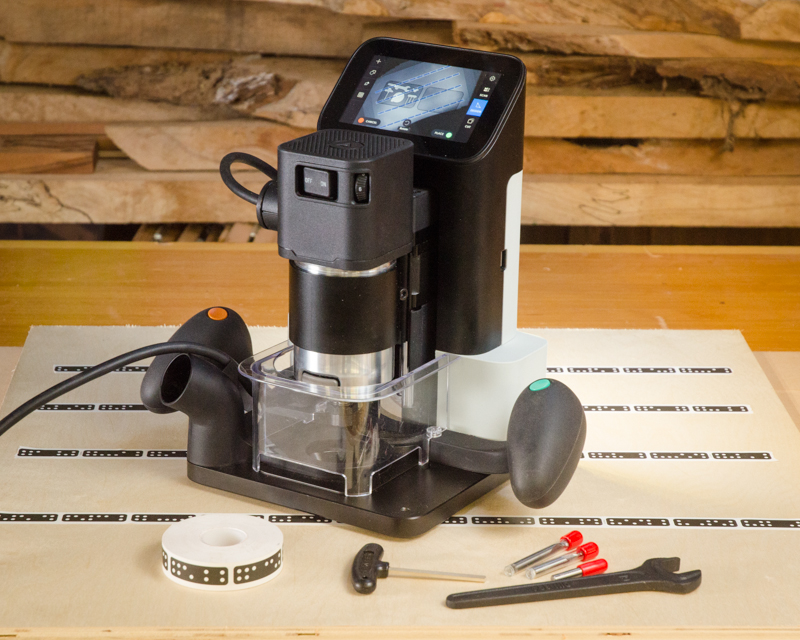
The Shaper Origin looks like a router but acts like a CNC.
Up to now, CNCs were large, heavy, complicated tools that take up a lot of space in a shop. The Shaper Origin is something quite different. It’s a hand-held, easy-to-use CNC that you take to your work instead of the other way around. I had the opportunity to try one of the prototypes in 2016 and, now that the Origin is ready to go, it’s time for a review.
Facts: Price $2,399 – but you may be able to preorder for $2,199. The kit includes a Festool developed spindle, a Festool compatable system case, three bits, two rolls of ShaperTape and a year’s subscription to AutoDesk Fusion 360. You can purchase additional 150’ rolls of ShaperTape for $18 each.
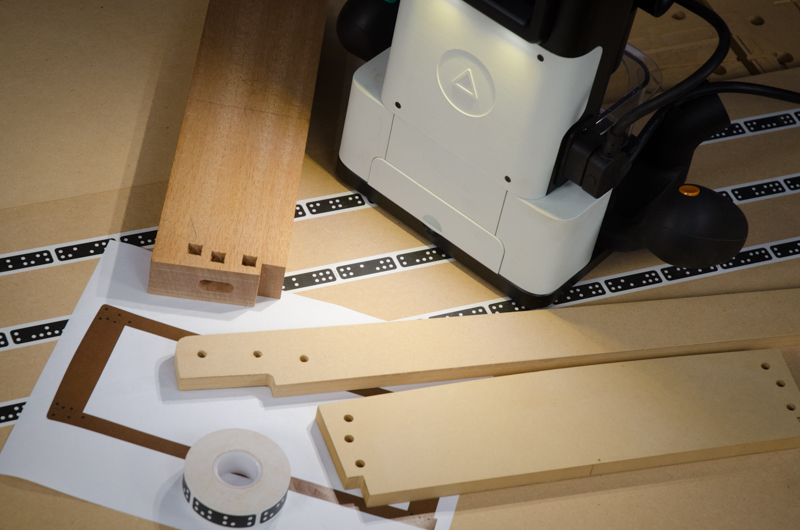
Perfect patterns make perfect parts. For an upcoming Popular Woodworking article on building the Greene and Greene Blacker Entry Mirror, I used the Origin to make patterns. Using the Illustrator drawings I made for the mirror almost 20 years ago, I milled patterns out of 1/2″ MDF. I cut in 2 passes and with a little sanding to smooth them out, they were ready to be used for shaping final mirror parts.
It’s different
The Shaper Origin looks and feels like a conventional router but acts like a CNC. A 5” color screen on top is used to place designs, follow their path and set parameters. While moving along the path, the CNC controlled spindle makes minor movements to correct our imperfect human attempts to keep to the line. You only have to come kinda close — about a quarter of an inch, which is easier to do than it sounds. You just follow the line on a magnified screen. The Origin will stick to it with near perfection.
How does it work?
All CNCs need to know their precise location within the space they work in. Conventional CNCs — with rails, gantries and drive systems, work in precision workspaces, constantly measuring changes in position. The Origin takes a different approach. On the front of the machine is a high-resolution camera that scans for domino-like position markers printed on a special paper tape the user lays out every 3”-4” in front of the machine. This gives the Origin the ability to be a CNC you can take to your work instead of the other way around.
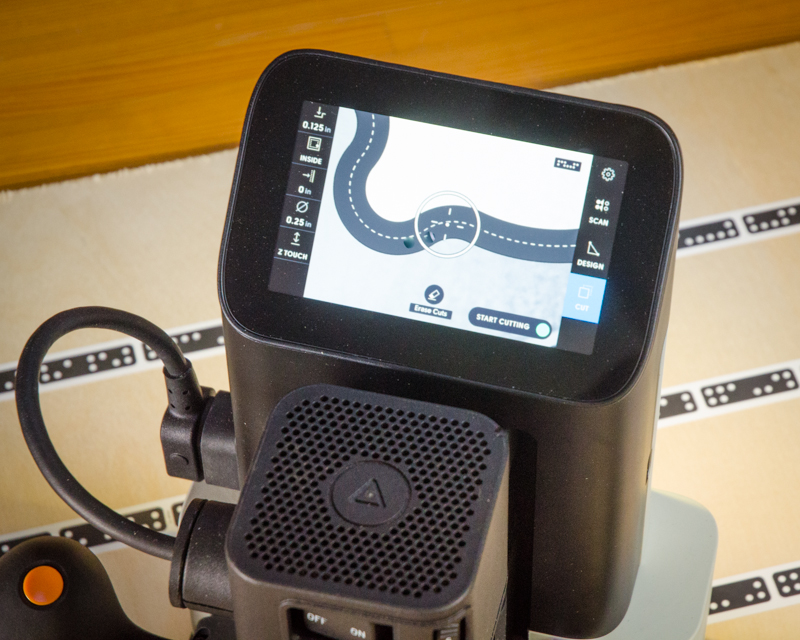
Just follow the trail on the 5″ color screen on top of the Origin, It will do the rest. The magnified view makes it easy. You’ve got a 1/4″ on either side of the path to work with. The Origin moves the spindle to correct minor movements and keeps you in line.
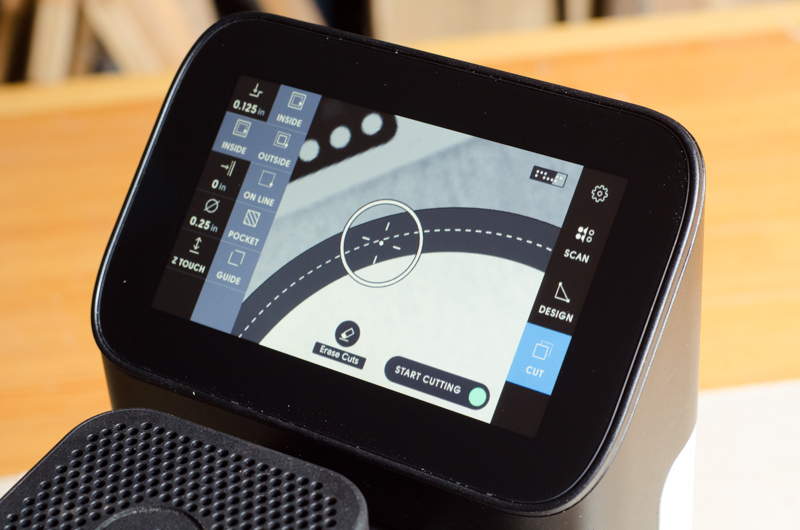
Setup screens are simple. Choose the type of cut, inside, outside, online or pocket.
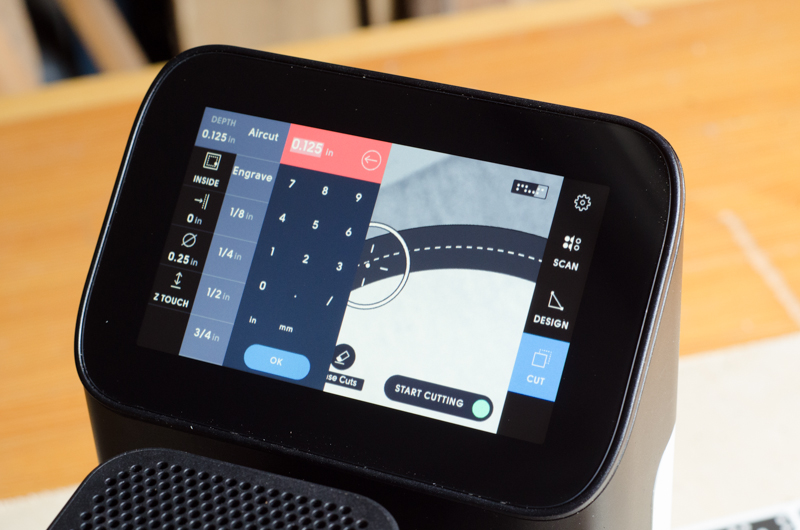
Choose depth of cut and any other details you’d like in increments of .001″.
Ease of use is a key feature
The Origin brings more than portability to the party. The company puts a major emphasis on ease of use. Screens are easy to understand and setting up a cut is simple thanks to a well-designed interface. Once you scan for markers, position your design, set cutting parameters and establish cutting depth with a touch off, you’re good to go. Turn on the spindle and follow the path on the screen. It really is that simple.
Shaper Tools takes ease of use a step further with a curated collection of projects at their Shaper Hub. Select a project on your computer or smartphone and the Origin — with built-in wifi, your choice is downloaded right into the machine. You can also create your own designs and import them via a USB flash drive. The Origin uses SVG (Scalable Vector Graphic) format files that can be created in Illustrator, Corel Draw and Inkscape — a free drawing program, Fusion360, Rhino3D v6 or any program that can export SVG files. If you use other CAD software, one of above programs can do the conversion for you.
Testing the Origin
In testing the Origin, I focused on four things: ease of use, accuracy, repeatability, and smoothness of cut. In use, I found that it’s easy to follow a design’s path on the screen. Auto mode helps speed you through fiddly areas. If you do get offline, the Origin immediately lifts up the spindle to keep your work from being damaged.
In situations with tight tolerances, like joinery where .001” matters, the Origin does quite well. Measured accuracy from 12” to 36” is .02”-.05”, from 4’ to 6’, .08”-.18”. Repeatability — important in real-world CNC use, is about .01”.
For best results, multiple passes followed by a cleanup pass are needed. Even then, Origin cuts aren’t quite as smooth along the edges as a well-tuned, conventional CNC who have the advantages of a rigid frame and defined workspace. But, after a little sanding, they’re good to go. User experience helps a bit, but through tuning, Shaper Tools should be able to improve smoothing and accuracy over time.
Methods for success
At first glance, the Origin’s focus on flat materials may seem like a limitation to a woodworker who works in solid wood. By no means is that the case. Like many woodworking challenges, it’s how you use your tools and combine their attributes to deliver the best result. For example, using the Origin to generate patterns for furniture and project is an excellent use of the machine. Armed with a router table or shaper and a good shaping jig, you could create and tweak patterns on the Origin and shape as many parts as you need at full-depth much faster than doing multiple passes with the hand-held CNC. I’ve made thousands of furniture parts using CNC made patterns with that approach. Or, if you have, say, a 2-1/2” thick part to make, use the Origin to cut the design part of the way and a conventional router or router table with a flush trim bearing bit to complete the cut.
Another technique is to use the Origin for details and use them for other tools to use. Got a long straight cut for a table top that has corner or end details you would normally add latter? Make the detail cuts with the Origin first, then connect the lines between the details with a track saw.
To get the best results from the Origin, a measured approach is in order. Because the spindle is a small trim router it’s better to take several passes at 1/8” or 1/4” at a time. Don’t make deep cuts. Next, leave a little offset (extra material) — .01-.02” or so will do. After a nearly full depth offset pass, make a final pass with the offset set to zero for the smoothest results.
Make sure you have a spoil board underneath your work to allow for through cuts. A 1/2” piece of MDF works well. Use double-sided tape to hold the board your cutting down to the spoil board. And, put tape underneath the areas where parts will be freed to hold them in place during cutting.
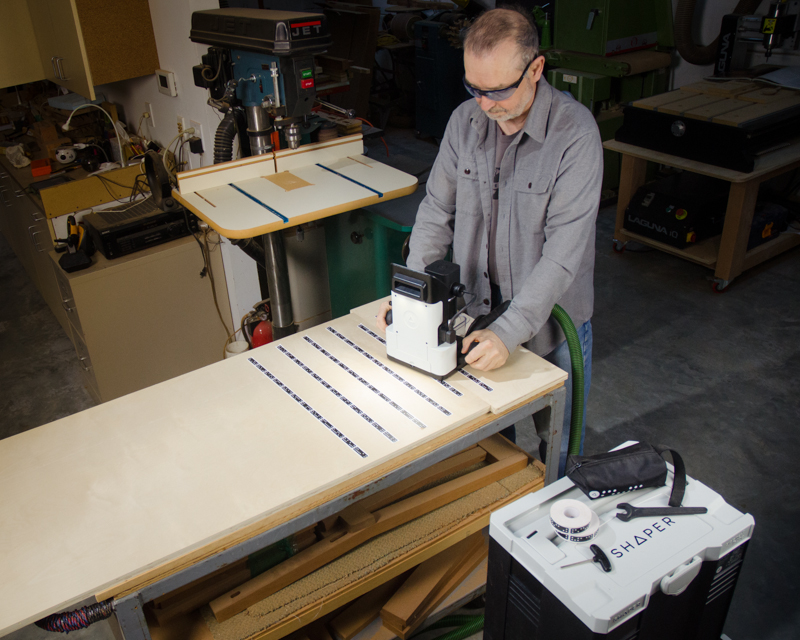
That tape is the Origin’s guide. ShaperTape has domino-like markers that the Origin uses to find its position within the workspace. Lay down strips of tape every 3″-4″. Relax, you don’t have to be perfect in your placement.
Is the Shaper Origin right for you?
Comparing the Origin to a fixed CNC in its price range is difficult because the machines are so different. A comparable small conventional CNC works on its own with higher precision and can cut and carve in 3D whereas the Origin’s workspace limits are best measured by the length of an extension cord. It works only in 2D and is user-driven. Though they can do similar work, it’s their differences that suggest different possibilities.
Keep in mind that the Origin, with its small footprint, needs to rest on a sizable flat surface. At first glance, that makes it better suited for cutting plywood, MDF, etc. than thick, solid wood boards of random widths and lengths. But, combine the Origin with smart use of other tools and some new methods and techniques, you can work past many of the limitations. I’ll get more into more detail with future Popular Woodworking blog posts.
Conclusion
As with all CNCs, keep in mind that real limits are not so much about hardware, but your ability to design. For many users, plans are important. This is the area where the growth of quality projects at ShaperHub, other websites, and digital publications will drive the use of smart woodworking tools. So, how well does the Shaper Origin fit within a hobbyist or woodworking professional’s shop? With its simplicity, exceptional ease of use, small footprint and unlimited workspace, for many — particularly those that see a CNC as a digital tool to support other woodworking methods, it could be a good fit.
Additional Resources
- Digital Woodworking on Instagram
- Personal Work on Instagram
- Digital Woodworking YouTube Channel
Here are some supplies and tools we find essential in our everyday work around the shop. We may receive a commission from sales referred by our links; however, we have carefully selected these products for their usefulness and quality.



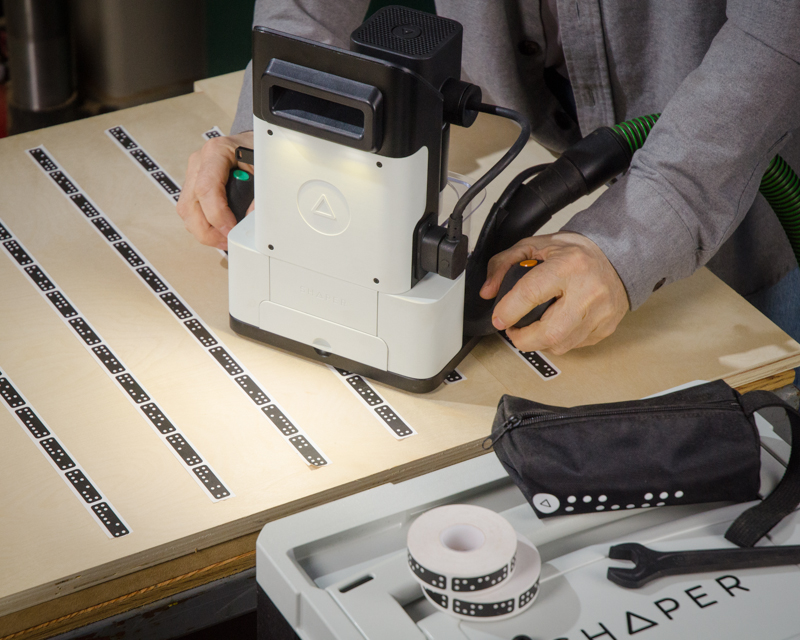





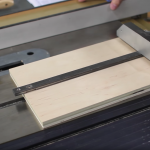

I think its possible to operate but not easy. do you have any other easy guideline ? on ther other hand its very expensive i think. have any other lower range tools ?
“In situations with tight tolerances, like joinery where .001” matters, the Origin does quite well. Measured accuracy from 12” to 36” is .02”-.05”, from 4’ to 6’, .08”-.18”. ”
So what does this mean. So if you put a hole, and then put another hole 1,3,4,6 feet away, with the correct amount of shaper tape in between.. the accuracy of their relative positions is +/- .02 (0.5mm),.05,.08,.18(4.5mm) respectively? can you describe your test a bit? Confused as you said 0.001 matters and then listed out a bunch of much larger errors. This might be a deal breaker for some if your numbers are right.
Do you think, with a little practice, you could operate this on a vertical wall, for example to incise lettering in situ?
As soon as I read $2400, I stopped reading.